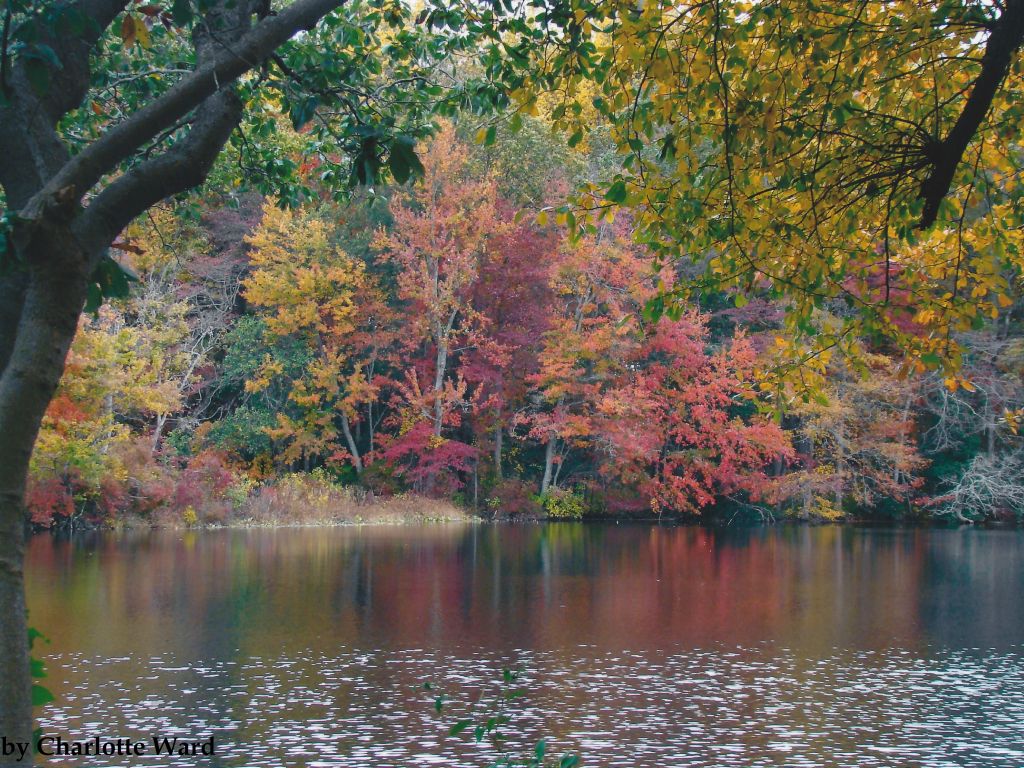Appoquinimink River || Army Creek || Blackbird Creek || Broadkill River || C & D Canal East || Cedar Creek || Delaware Bay Drainage || Delaware River Drainage || Dragon Run Creek || Leipsic River || Little Creek || Mispillion River || Murderkill River || Red Lion Creek || Smyrna River || St. Jones River
Murderkill River
Background The Murderkill River watershed is located in the southeastern portion of Kent County. The main watercourse is the Murderkill River with its headwaters just west of Felton. Flowing generally eastward, the length from the headwaters to its mouth on Delaware Bay at Bowers Beach is 20.5 miles. The lower 10.5 miles are tidal. Two important ponds, Coursey Pond and Killens Pond, are both on the Murderkill. The Murderkill watershed is dominated by agriculture land use followed by forest and wetlands. DNREC's Wetland Monitoring and Assessment Program (WMAP) has been developing scientifically robust methods to monitor and evaluate wetlands in Delaware on a watershed basis. Learn more about the health of the wetlands in this watershed from the DNREC Wetlands Monitoring and Assessment Program.
Water Quality The nutrient and bacteria TMDLs for the Murderkill Watershed require 30% reductions in nonpoint nitrogen loads, 50% reductions in nonpoint phosphorus loads, 32% reductions in nonpoint freshwater bacteria loads, and 67% reductions in nonpoint marine bacteria loads. Also the TMDLs require a limit on point source nitrogen to 755.3 lbs/day, a limit on point source phophorus to 62.7 lbs/day, and a limit on point source bacteria at 35 CFU/100 ml. The designated uses for the Murderkill include primary recreation, secondary recreation, fish, aquatic life and wildlife, industrial water supply, and agricultural water supply in freshwater segments. This watershed has sites sampled for a consistent suite of environmental contaminants. These contaminants are broadly classified as Volatile Organic Compounds (VOCs), Semi-Volatile Organic Compounds (SVOCs), Pesticides, Polychlorinated Biphenyls (PCBs) and Metals as listed using USEPA and DNREC defined standards. When sites are adjacent to water bodies sediment samples are collected to assess potential impact from a site on the health of the waters. Learn more information specific to this watershed from the DNREC Advanced Facility Search Tool.
Plants and Wildlife The rare species of naturally occuring bald cypress trees is found in the Murderkill. Also, significant remaining populations of Atlantic White Cedar are also found in the Murderkill. Delaware's Department of Natural Resources and Environmental Control (DNREC), Division of Fish and Wildlife conducts on-going inventories of natural communities as well as rare and declining species, (e.g., state and globally-rare plants, birds, insects, mussels, reptiles, and amphibians). It maintains a database, both electronic and manual, of its findings throughout the state. Learn more about the wildlife and plant communities in this watershed from the DNREC Division of Fish and Wildlife Conservation Programs. In addition, the Division of Fish and Wildlife, working with the University of Delaware's Institute for Public Administration - Water Resources Center, maintains online databases about plants and plant communities in Delaware. Learn more about the plant communities in this watershed from the DNREC Division of Fish and Wildlife.
Recreation and Culture Killens Pond State Park is found in the Murderkill Watershed. Recreational opportunities abound at Killens Pond State Park with a 66 acre millpond which features fishing and boating. Canoes, kayaks, rowboats and pedal boats can be rented during the summer. The Murderkill Canoe Trail provides a challenge for the most adventurous paddler. The Killens Pond Water Park offers resort entertainment in a serene, natural setting. Open year-round the park's campground and cabins are popular retreats no matter what the season. Hiking trails and a cross country course wind through several types of habitat. A number of game courts, ball fields, disc golf, playgrounds, and picnic areas are also found in the park.
Further Resources For more detailed information on this watershed, its water quality and resources, check out the following resources: Delaware TMDLs Delaware Watershed Plans Delaware Whole Basin Reports CCMP for the Delaware Estuary  View of McGinnis Pond Photo credit: Charlotte Ward | Quick facts ▲ Square Miles: 106.7 Population*: 27,897 States: DE Counties: DE: Kent *Source: U.S. Census Bureau, American Community Survey 5-year estimates, 2019.
Land cover (total)† ▲ †Source: National Oceanic and Atmospheric Administration, Office for Coastal Management. 2016 C-CAP Regional Land Cover. Coastal Change Analysis Program (C-CAP) Regional Land Cover.. |